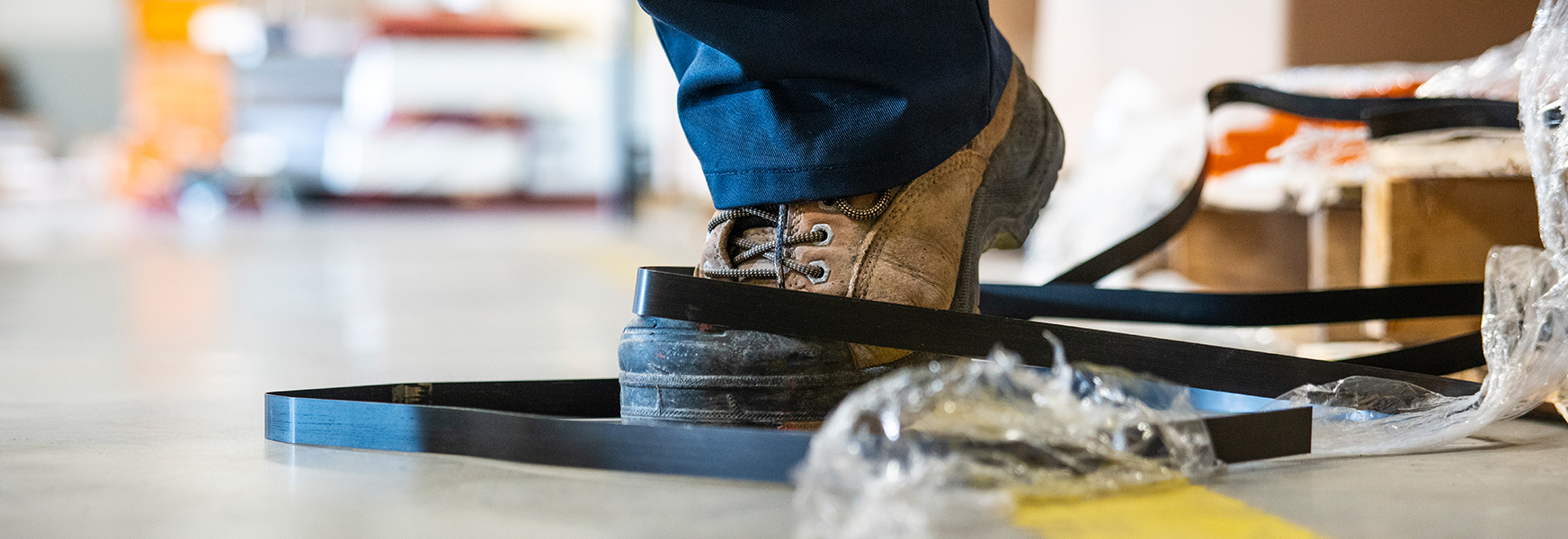Fall Prevention Awareness Week: Eliminate the Leading Causes of Workplace Injury

Fall prevention is a critical element to any safety program. Regardless of industry, falls remain one of the leading causes of workplace injury. But this is a hazard that can impact anyone, at home or at work. It can be a slip on ice or snow, a wet floor, or a trip over bunched carpet or an errant extension cord. Falls from height are far too common in the construction trades, but can also occur in general industry environments and by anyone using a ladder. It’s high time to get serious about fall prevention.
According to OSHA, fall prevention/protection issues remain the most frequently cited issue with 6,010 violations in FY2019. “We are seeing fall protection not provided where you have unprotected sides or edges,” said Patrick Kapust, deputy director of OSHA’s Directorate of Enforcement Programs, at the 2019 National Safety Council Congress. “Obviously falls are one of the focus areas that we are trying to minimize.”
Organizations involved in working from height are required to provide employees training and enforce the proper use of fall prevention strategies and fall protection equipment. Remember, fall protection is required when there is a fall hazard of four feet in general industry environments or at six feet at construction sites.
Falls on the same level are also a serious safety issue. Thousands of employees are hurt each year by slipping or tripping and the resultant fall to the ground or floor. Good housekeeping is critical to fall prevention. Keeping all walkways clear of trip hazards, maintaining floor surfaces properly, and cleaning up spills will go a long way towards preventing falls.
September 23 marks the end of summer and the beginning of fall. Well, maybe we should call it autumn instead. Regardless, that only means that winter is quick to follow. For those in the cooler climates, this can only mean freezing rain, ice, and snow all over our parking lots, streets, and sidewalks. Prepare now! Talk to your employees about how they will avoid falling down this winter. Review your site plan for snow removal, sand and salt application, and the use of traction enhancers when needed.
Fall prevention is not unlike most safety hazards. We should address them in the same manner by using the hierarchy of safety controls. First, can we eliminate the hazard? This could mean the elimination of working at height when possible by accomplishing work on the ground first, then putting elements in place. Connecting trusses together on the ground, then lifting them in place with a crane is an example of this. There is still work to be done at height, but a portion of that risk is eliminated.
Secondly, can an engineering control be put in place? Guard rails would be an example of this. Engineering out the hazard is the most reliable method of injury mitigation after elimination.
Thirdly, administrative controls should be used. These include training, policies, and procedures. Not as effective as engineering controls because people have to be compliant, but they are definitely important to implement. Document all training and retrain when necessary. Also remember that people tend to do what is inspected more than they do what is expected. Make sure your organization is engaged in regular site inspections focused on fall hazards and proper controls.
Last in the hierarchy comes personal protective equipment (PPE). This would include personal fall arrest systems (PFAS) or traction enhancers like ice cleats. This equipment should be utilized after all other possible controls have been put in place. In the case of ice cleats, let’s first see if the hazard can be eliminated by closing the business, delay opening, or by sanding and salting enough to eliminate the fall potential. Then make sure people are trained and aware of the fall hazards that might be present. Use our acronym, S.A.F.E. - Surface, Awareness, Footwear, and Environment. See our previous posts from Pete Koch on this method of fall prevention awareness.
Each worker must be aware of the hazards around them and engage in the right controls to prevent falls. This includes all of the above, but also includes an element of personal responsibility. Ladders don’t cause falls, ice doesn’t cause falls. People failing to understand the hazard and not using the proper controls cause falls. Yes, it can happen to anyone. But if each person keeps themselves in good physical condition, focuses on their surroundings, and uses the right controls, including PPE, most falls can be prevented. Sedentary lifestyles don’t make this situation any better, so get out there and be active as much as you can. As our Ergonomics Director, Al Brown says, “The more we sit the more we fall down.”
Check out our slip/trip/fall prevention resources in the Safety Director, or any of these previous posts on the subject:
A Science for the Art of Slipping: Take Charge of Your Traction
Let’s Not Fall Down on the Job… or Anywhere Else
Get Rock Solid on Slip and Fall Prevention

